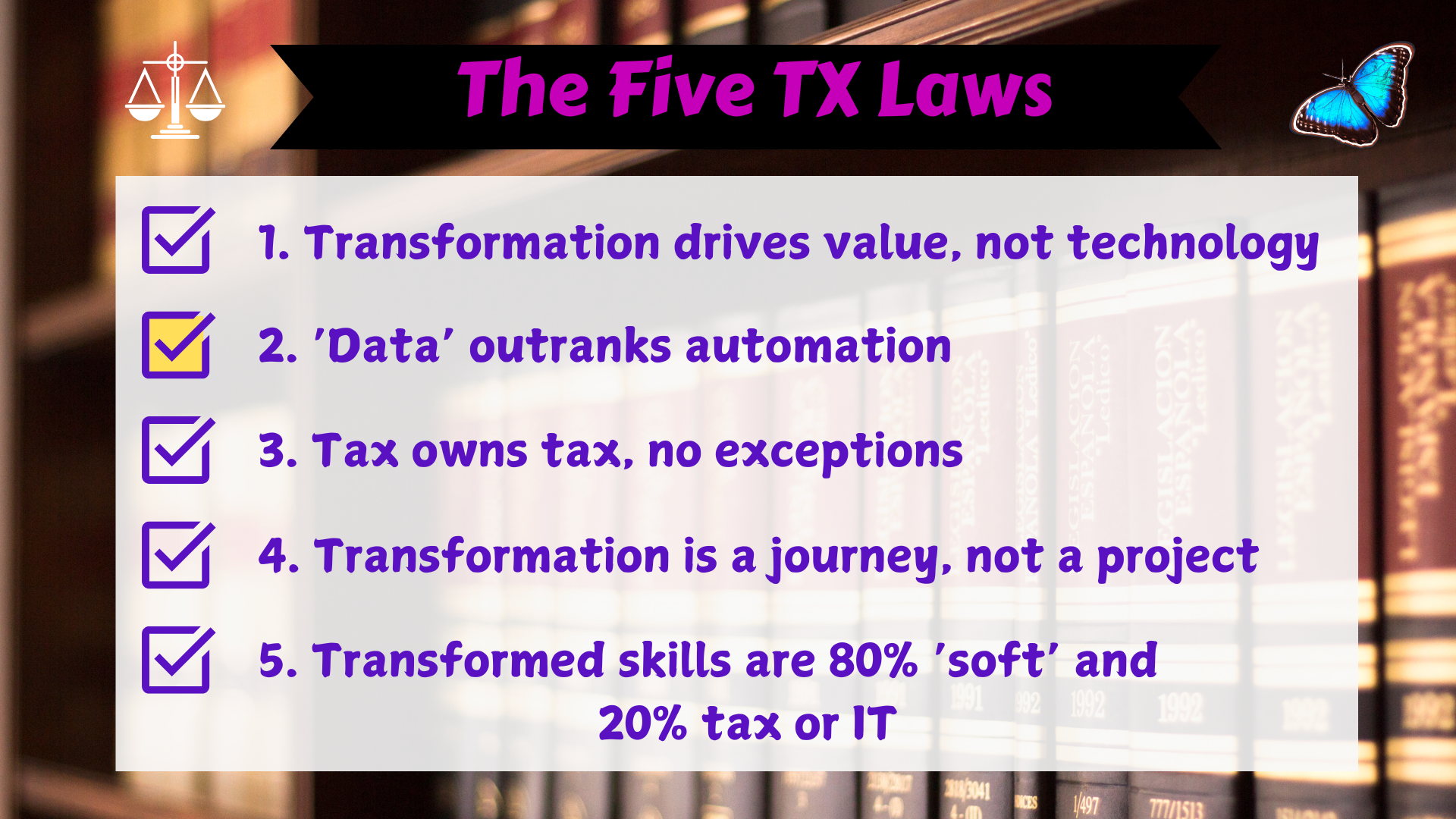The Five TX Laws are a form of universal truth. We know this because, after pursuing the tech-centric route for some time, astute individuals consistently arrive at the same or similar set of conclusions.
This is the second of five articles where we explore each law in turn, starting with a guiding principle and followed by a conversational narrative that provides real-world context in everyday language. For this, we imagined ourselves chatting with an intelligent friend, sipping brandy in comfortable armchairs by a fire (mental imagery inspired by The Economist Style Guide).
***
TX Law #2: ‘Data’ Outranks Automation
Principle: Digitalization demands “tax data right first time at source”, not process automation.
Fireside chat:
Taxologist: “We have to be careful with this one. If you ask the business what technology is for, they’ll likely say ‘automation’—which is fine, except they’re thinking in the Henry Ford* sense, where machines replace jobs humans used to do. Businesses tend to like this idea and get quite attached to it. Because it’s not in their line of sight, they often miss the impact technology can have on those processes in the first place.”
Intelligent friend: “Wait a minute! Are you saying that business process automation isn’t important?”
Taxologist: “Not at all. BPA is still important, but it often results in just incremental improvements downstream. Take tax reporting, for example. For the past 25 years, the standard process has been: download tax data from the ERP, vet that data in Excel, reformat it manually or with a macro for the tax return, and then file. Most of the work is in the vetting because the data quality is poor and not trusted. Have you ever noticed how tax managers always ask for tax reports with as much data as possible—50 columns if they could? That’s because they’re using all that information to recalculate the tax themselves in their heads at reporting time.”
Intelligent friend: “Sure. But that’s not the situation now, right!?”
Taxologist: “It’s getting better, and real-time reporting is putting an end to it anyway. It’s rapidly closing the window of time where data can be manually manipulated. But companies are already calling time on it due to the costs, tax risks, and inefficient use of skilled professionals’ time.”
Intelligent friend: “I get that. But what does this mean for process automation?”
Taxologist: “Put it this way: if the data is correct from the start—like everyone says it should be—and tax trusts that data, the need for vetting disappears. If the process is gone, there’s certainly no need to automate it.”
Intelligent friend: “Of course. But it’s not that simple, is it?”
Taxologist: “Correct! First, you still have to report that data, but if it’s high quality, reporting becomes algorithmic, which is the ideal scenario for automation. Where automation fails is with poor-quality data, because bad data requires human intervention to correct, yet people tried to automate it anyway. Second, reaching that level of data quality and trust is challenging. Too many factors get in the way, like lack of vision, skills, leadership, the technology itself, and even a basic understanding of what data is in the first place.”
Intelligent friend: “Ah, so we do still need automated downstream processes until that’s resolved!?”
Taxologist: “Yes and no. E-invoicing is changing the landscape anyway. If your data isn’t correct before the invoice is sent, tough luck. I’d suggest the best approach is to use technologies like AI and some of the better industry cloud products to improve speed and human productivity in the meantime while focusing long-term on solving the data problem. By the way, vast amounts of automation are required to maintain a high-quality, real-time tax data model at the source—far more than most people can imagine and certainly more than any human could ever handle manually. So, putting data first actually changes the meaning and value proposition of automation.”
* In 1913, Henry Ford pioneered the moving assembly line, reducing the production time of a Model T car from 728 minutes to just 93 minutes. The sale price of a Model T dropped from $825 in 1908 to $260 by 1925. However, this innovation triggered other changes, such as doubling workers’ pay and reducing the workweek to five days to prevent staff turnover.
***
Please feel free to catch up on the first article here: 874$ 2024-09-19 TX Law #1.
Don’t forget to join us at WU Tax Law Technology Center course in Vienna – Nov 2024, where we will explore business use cases, discuss specific strategies, and workshop practical aspects of tax transformation.
Until next time …


No comment yet, add your voice below!